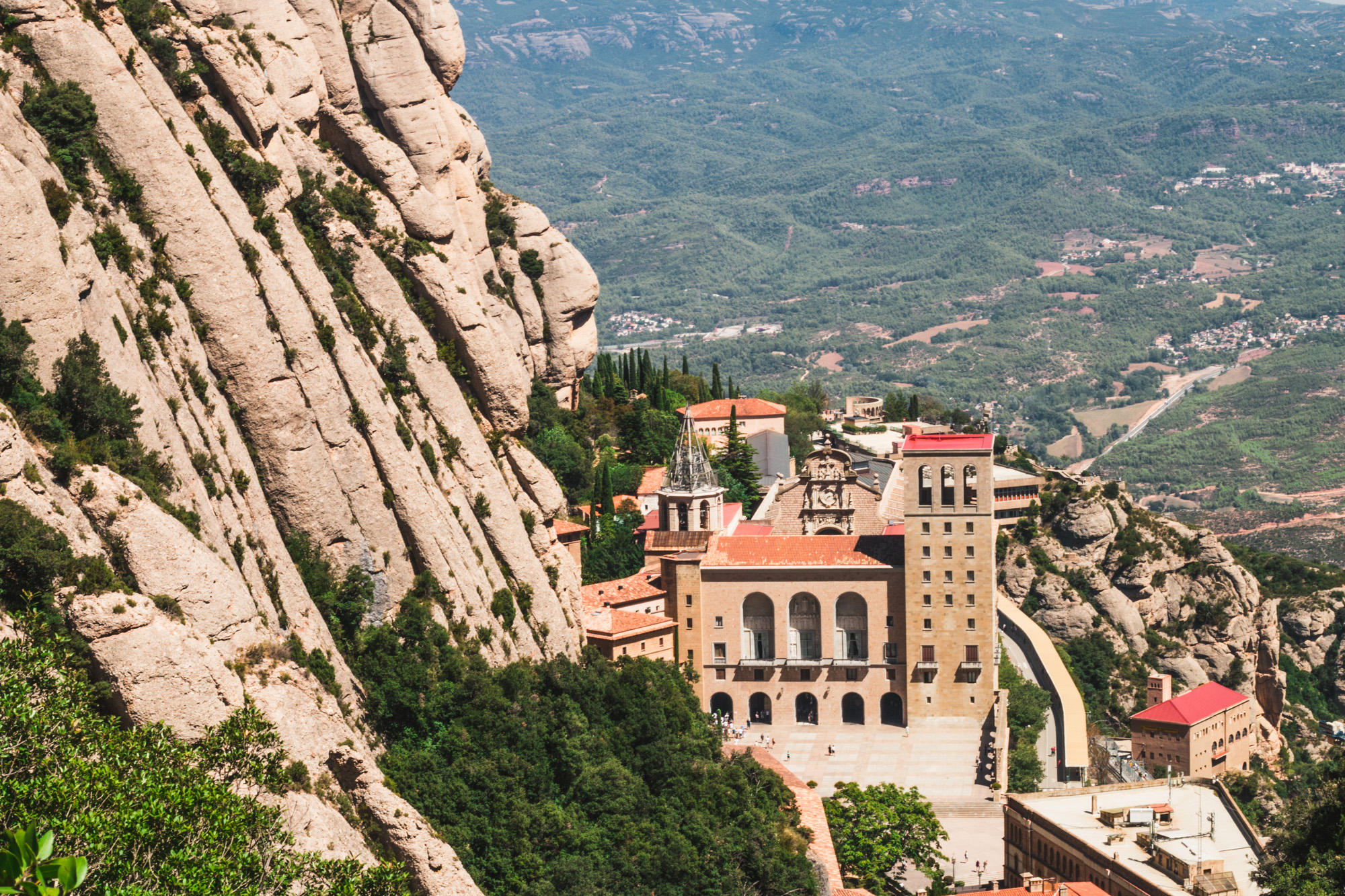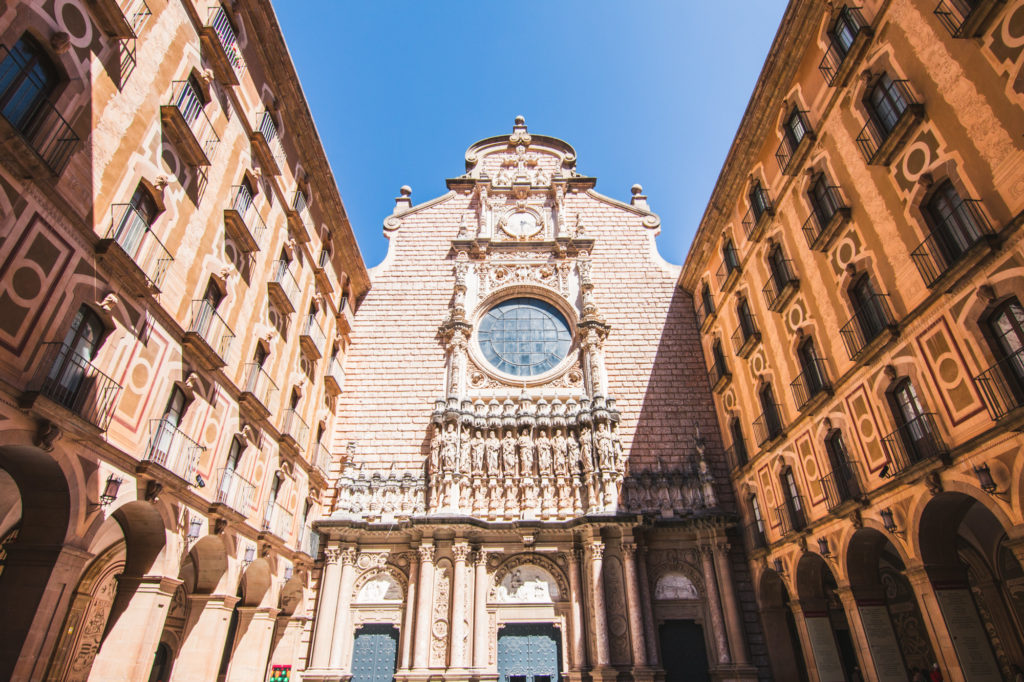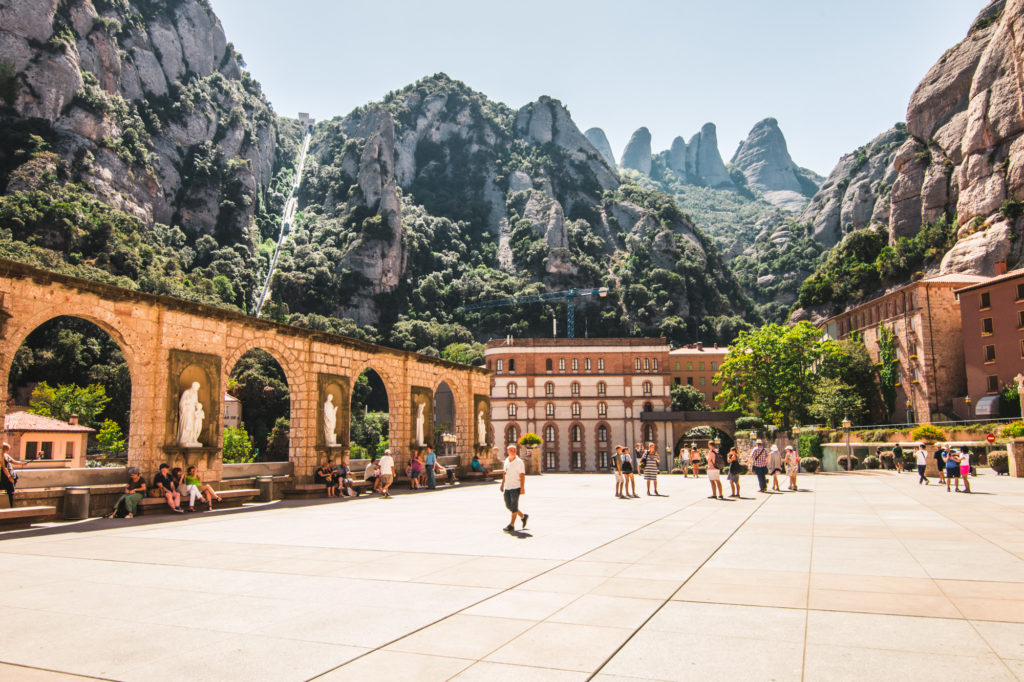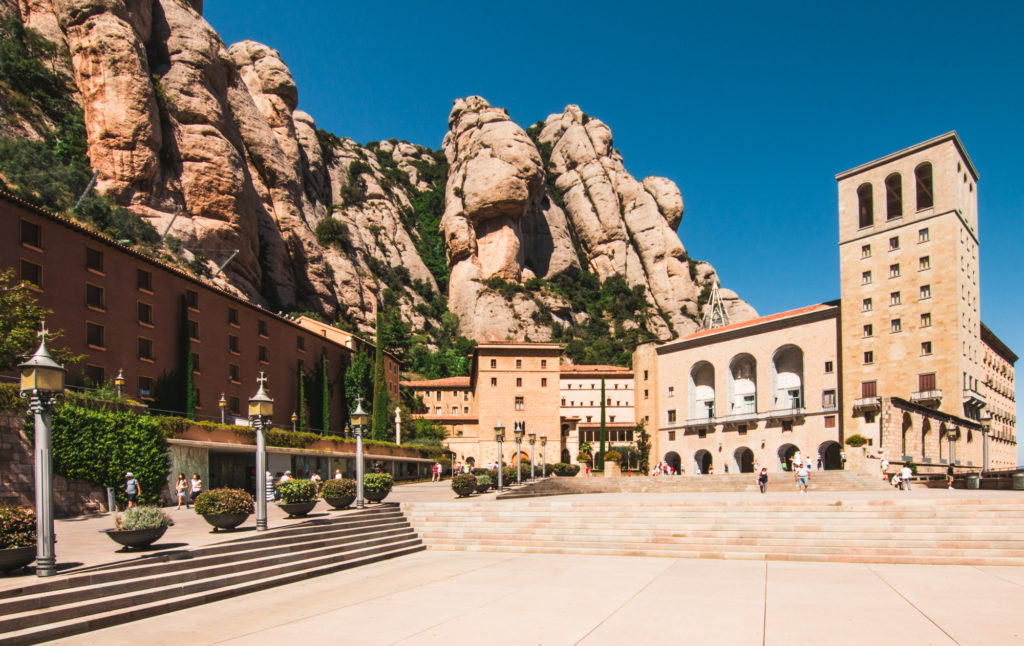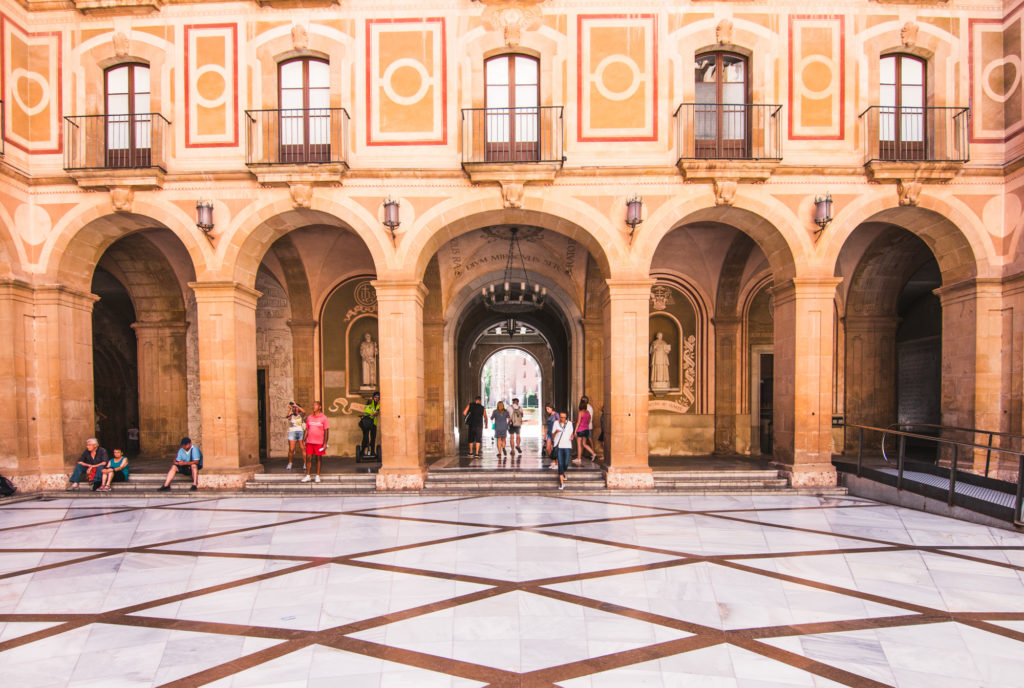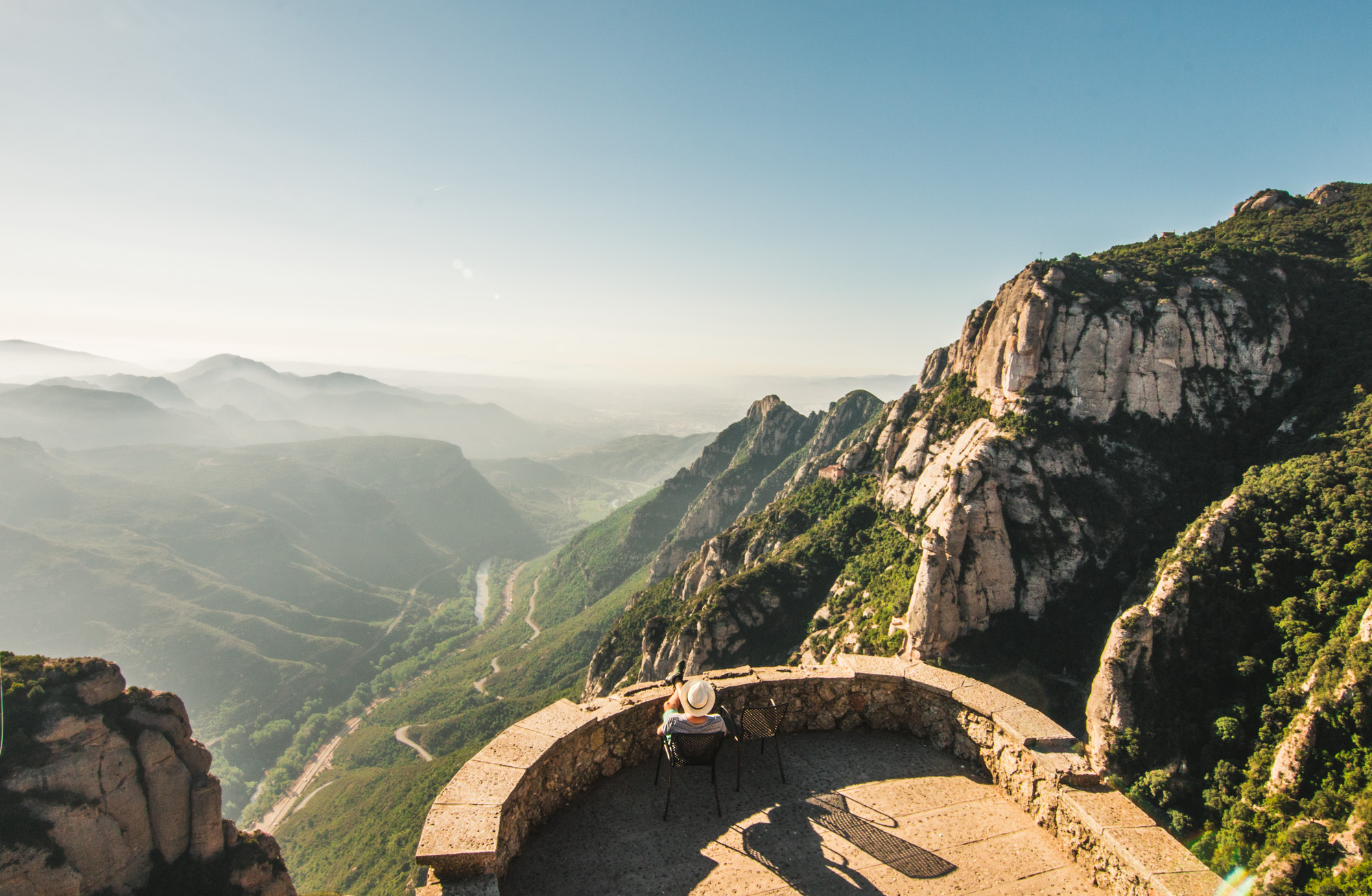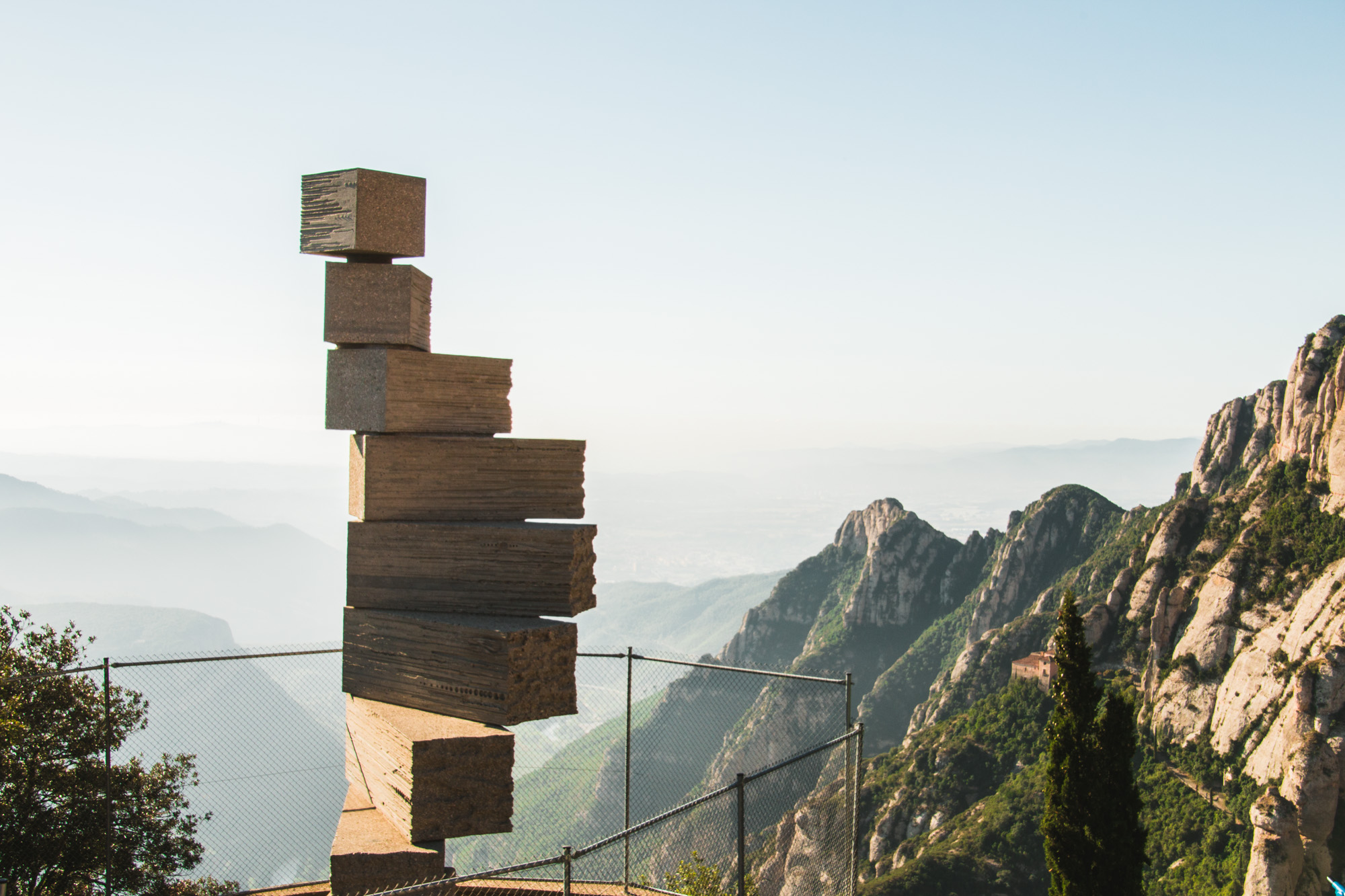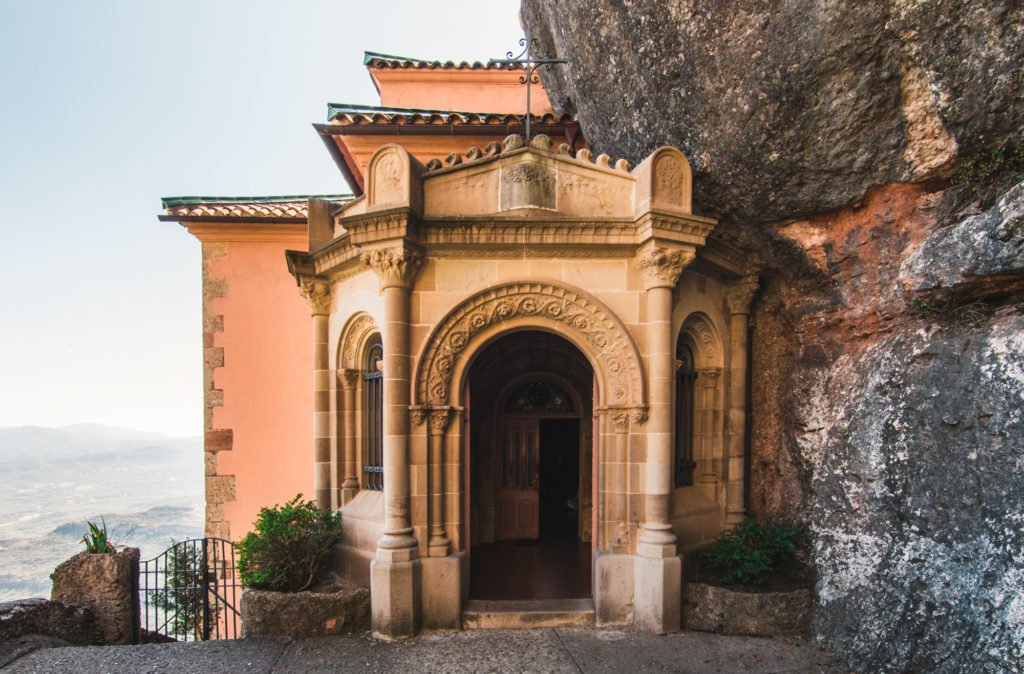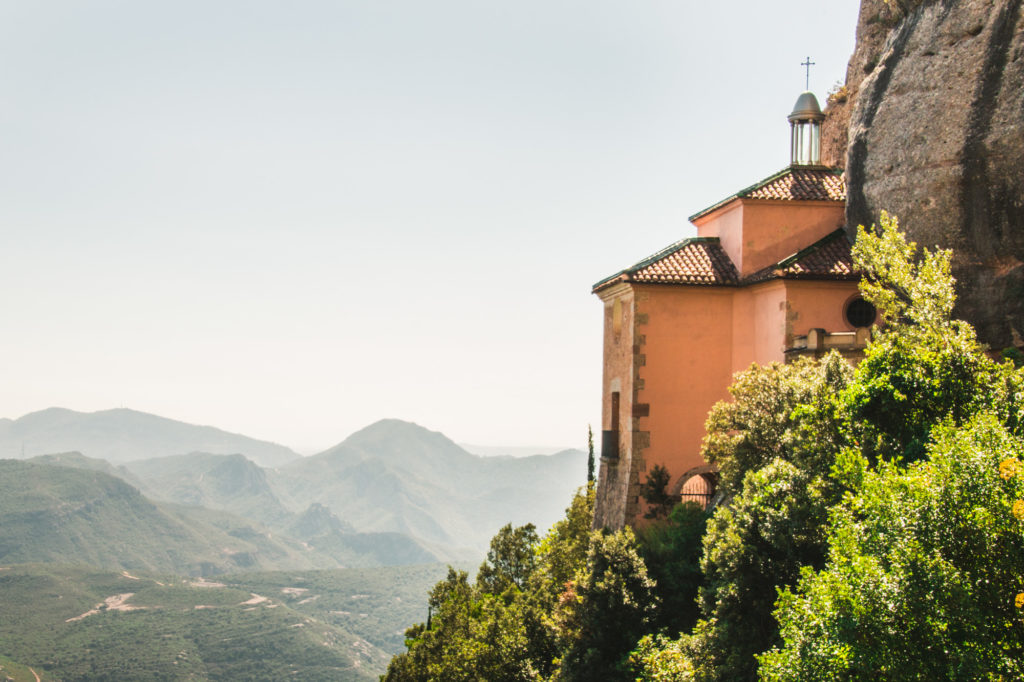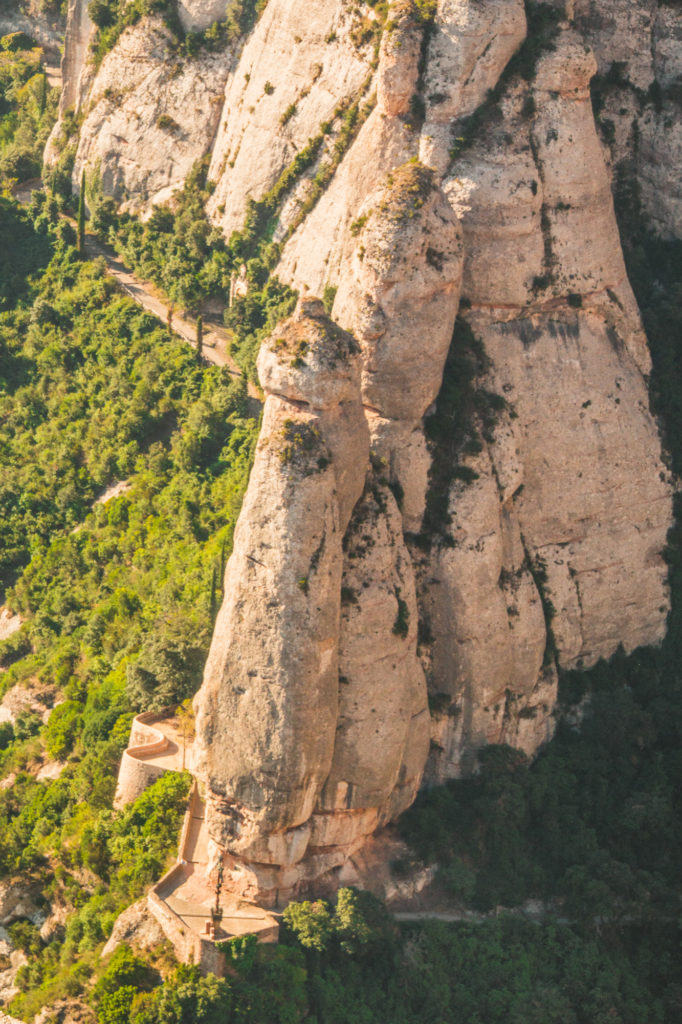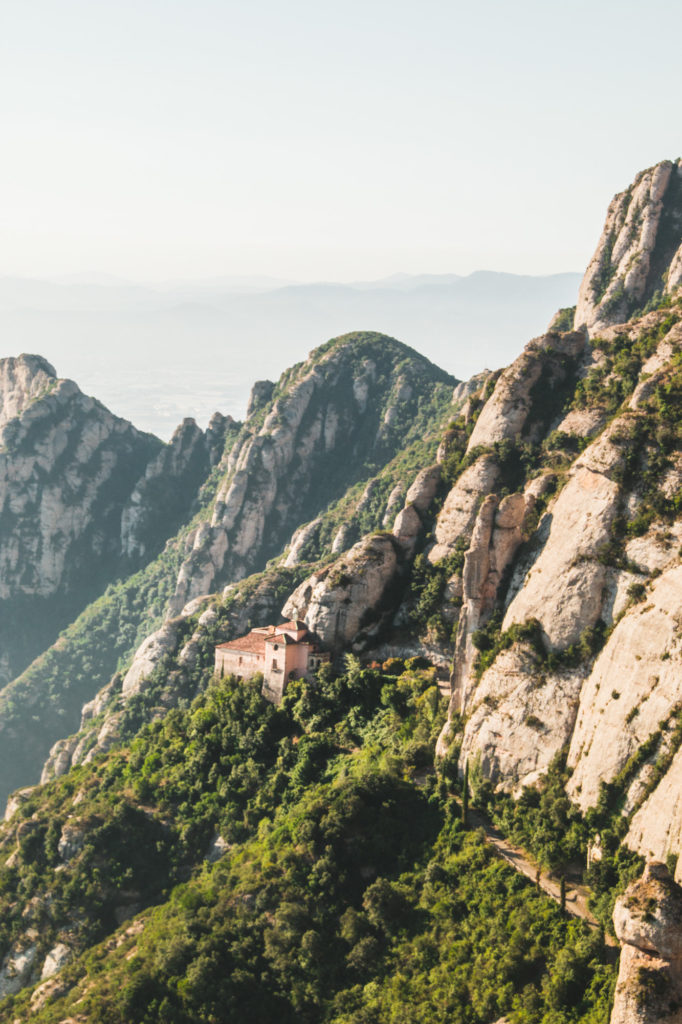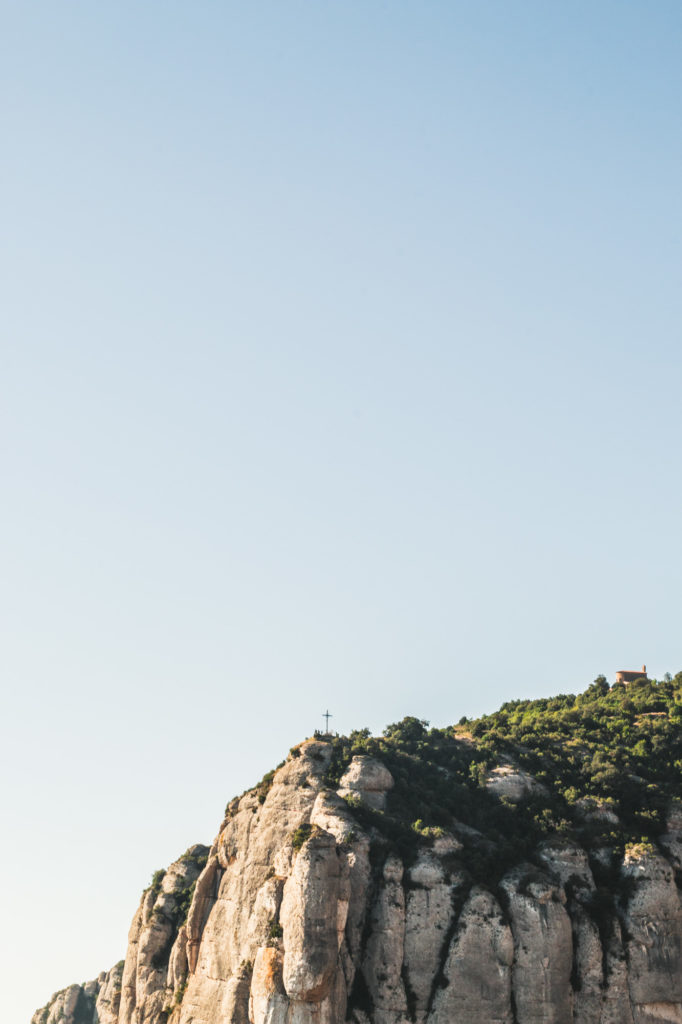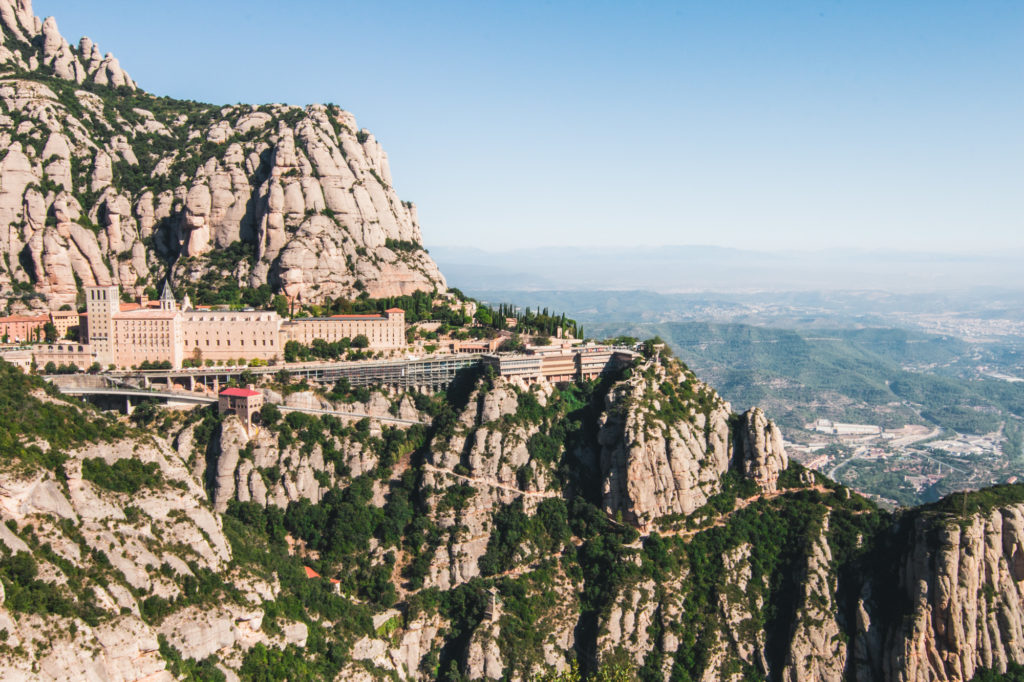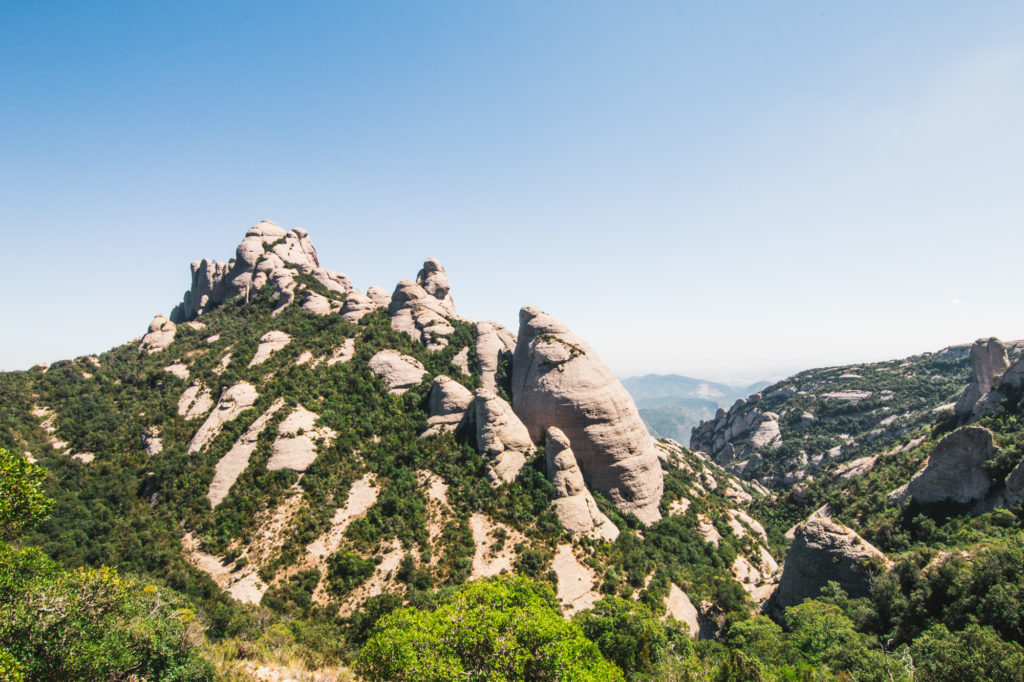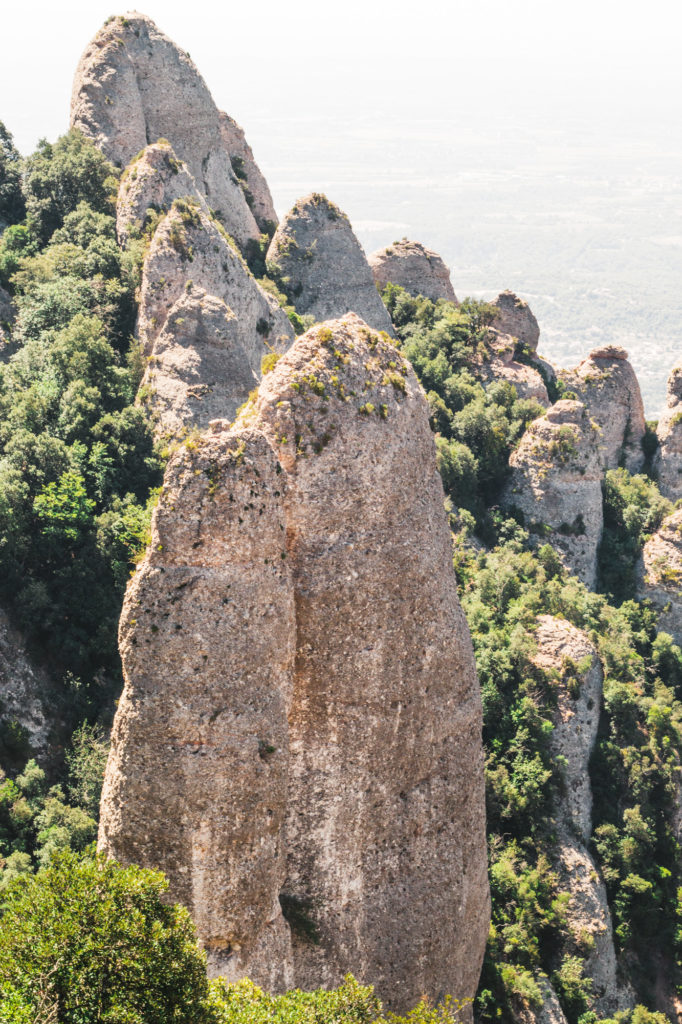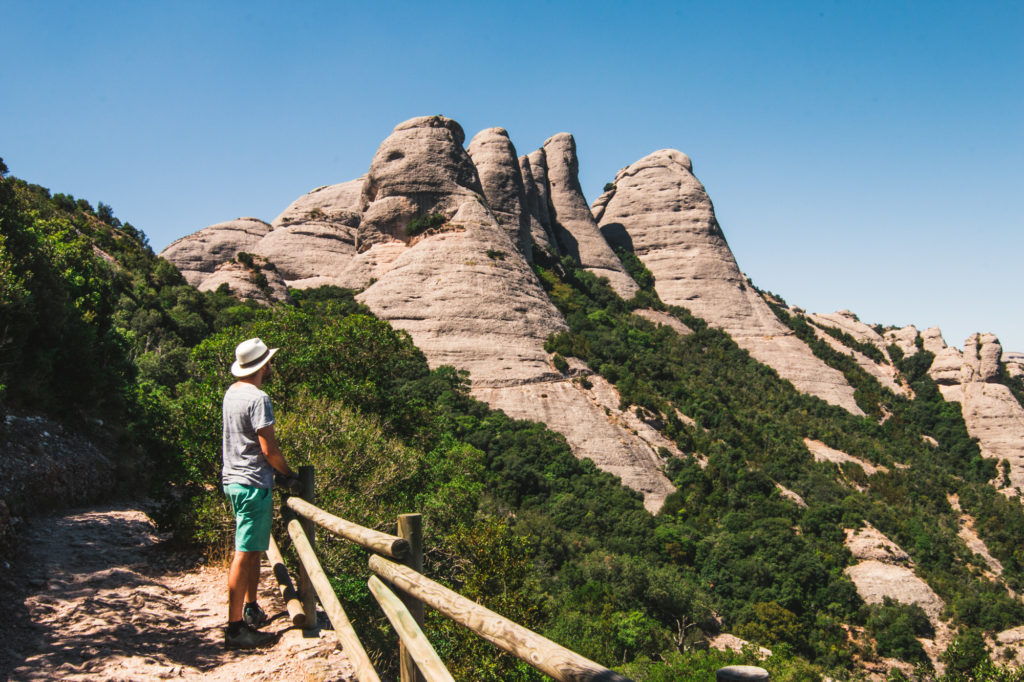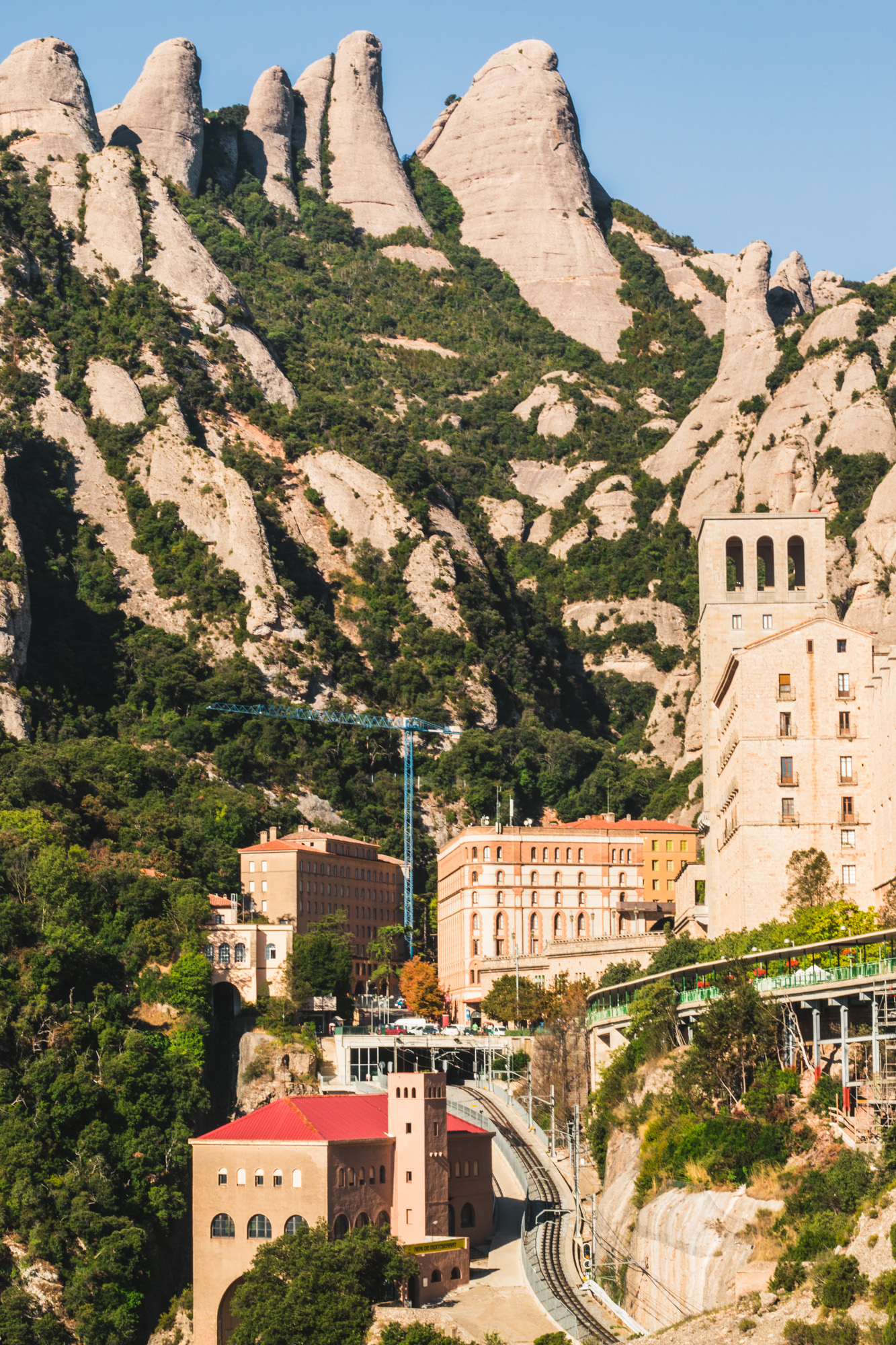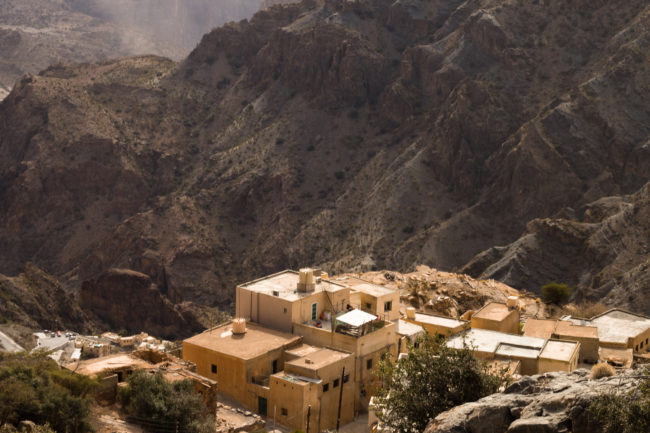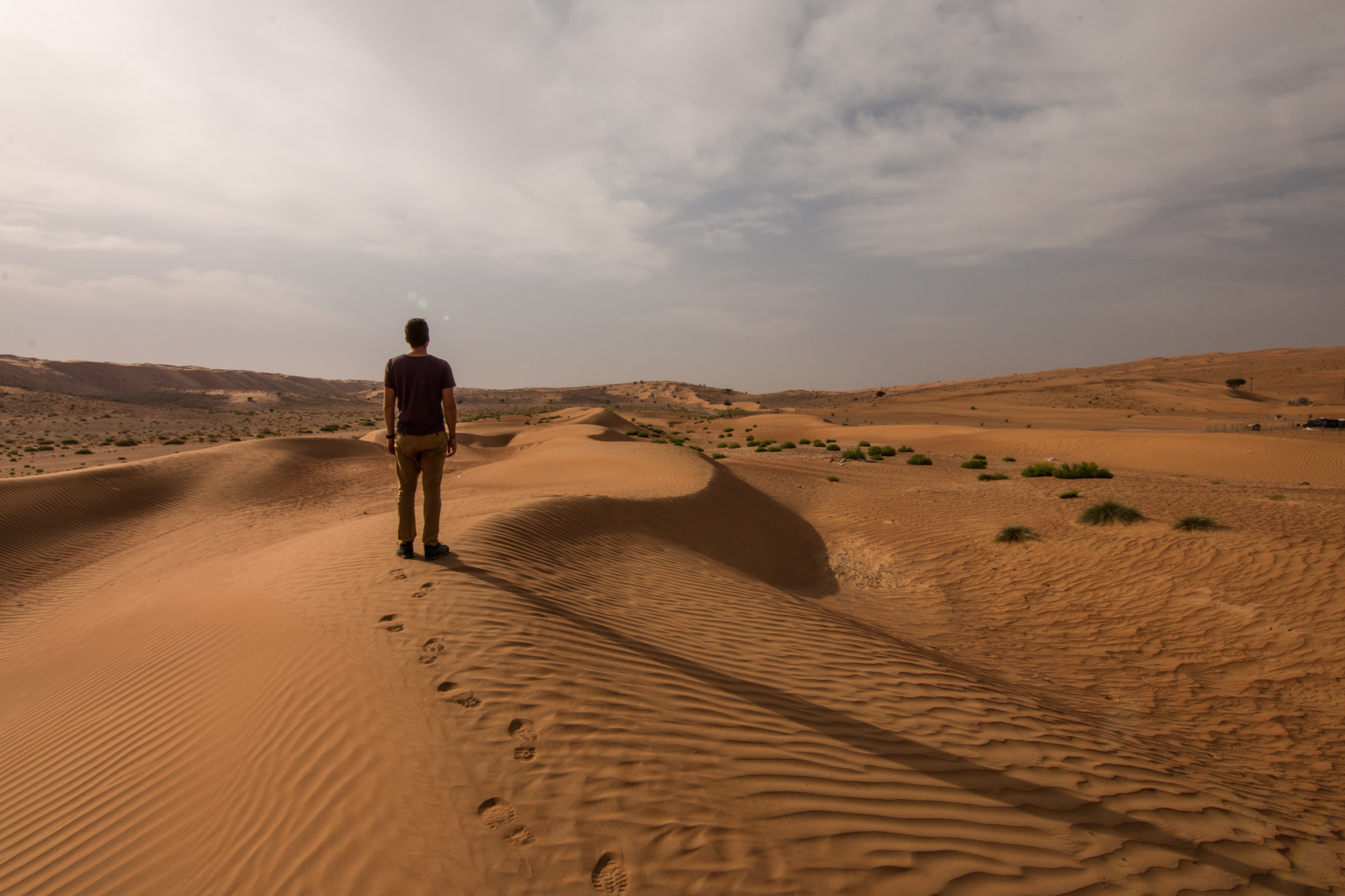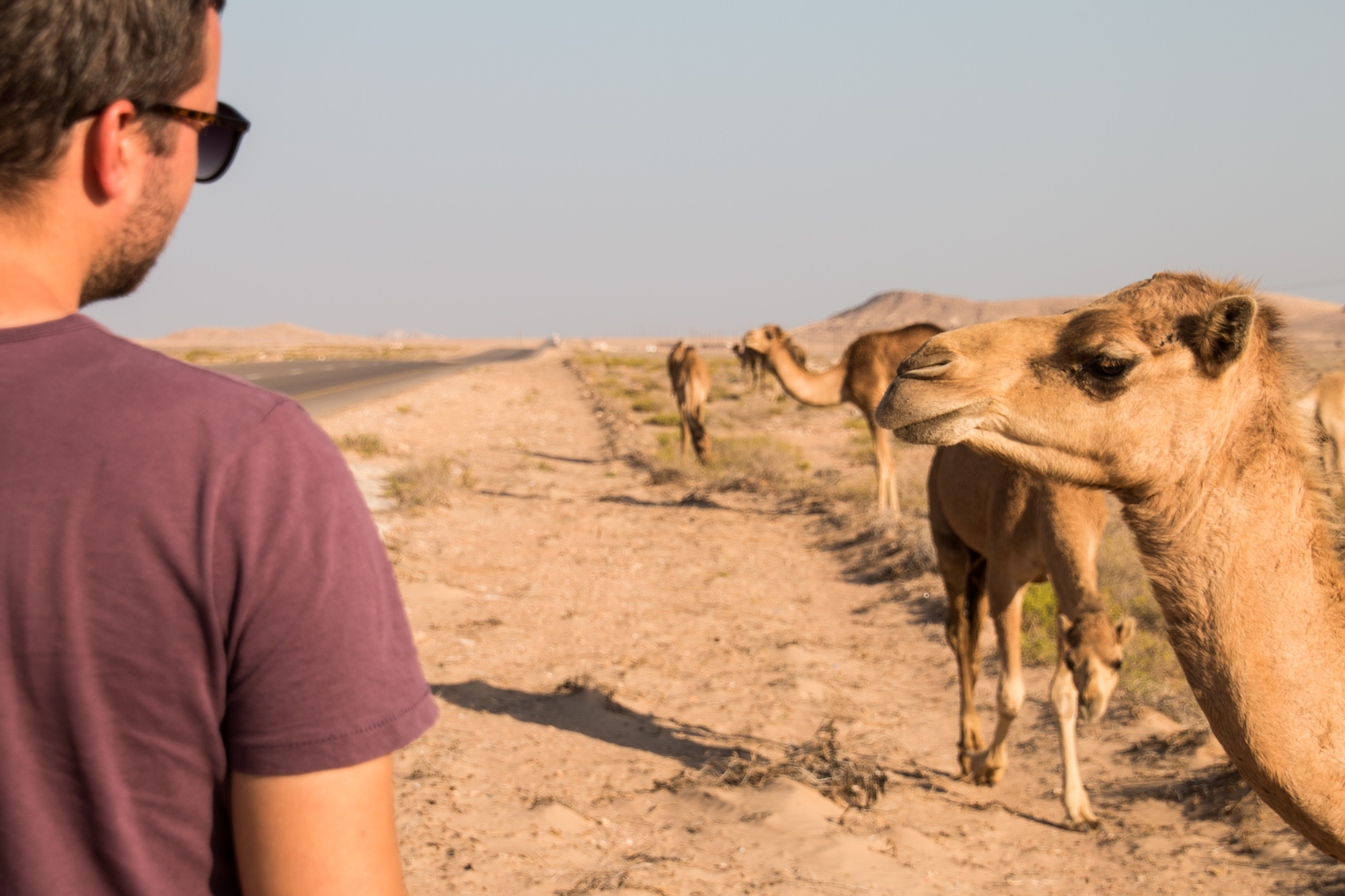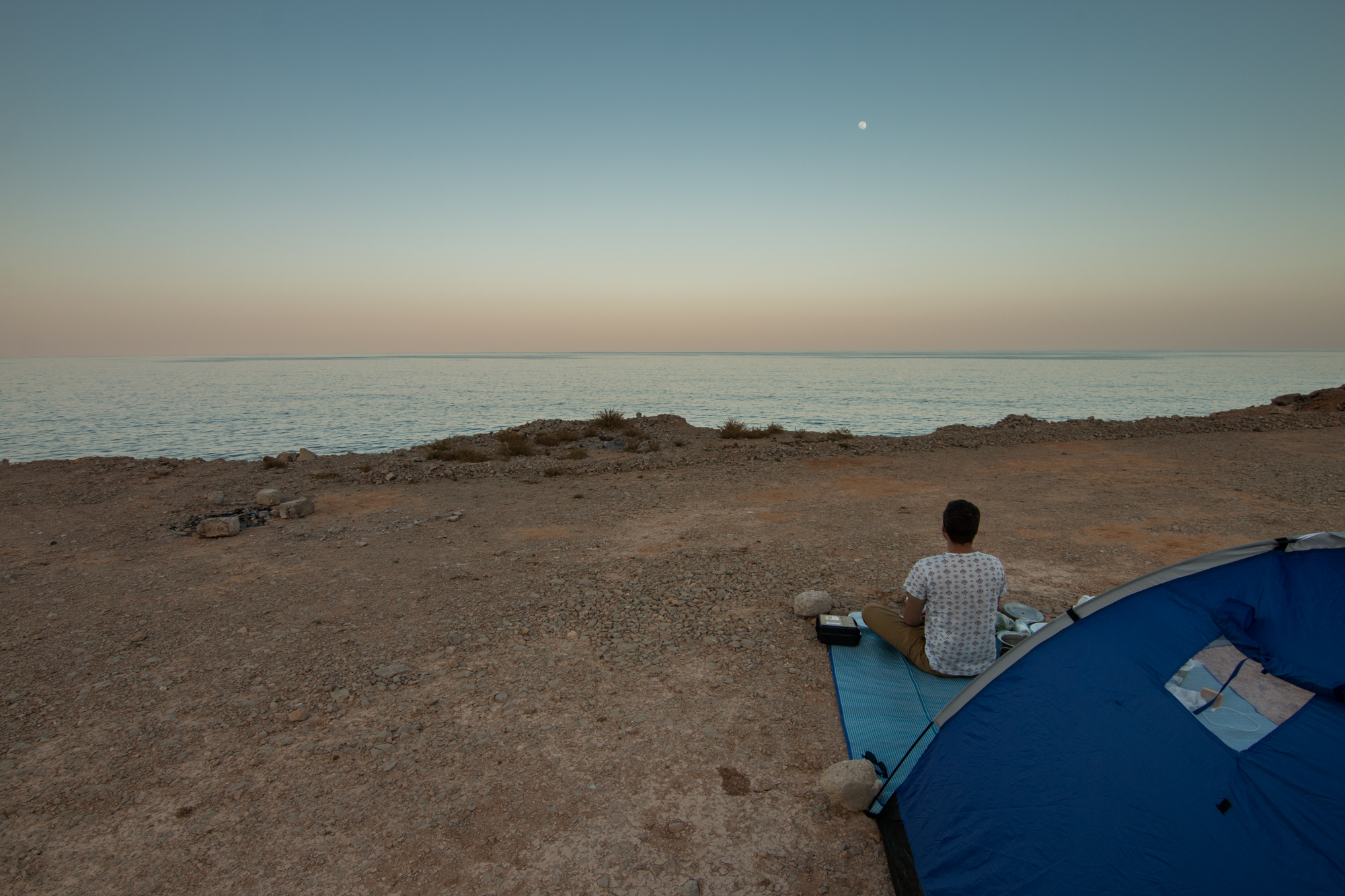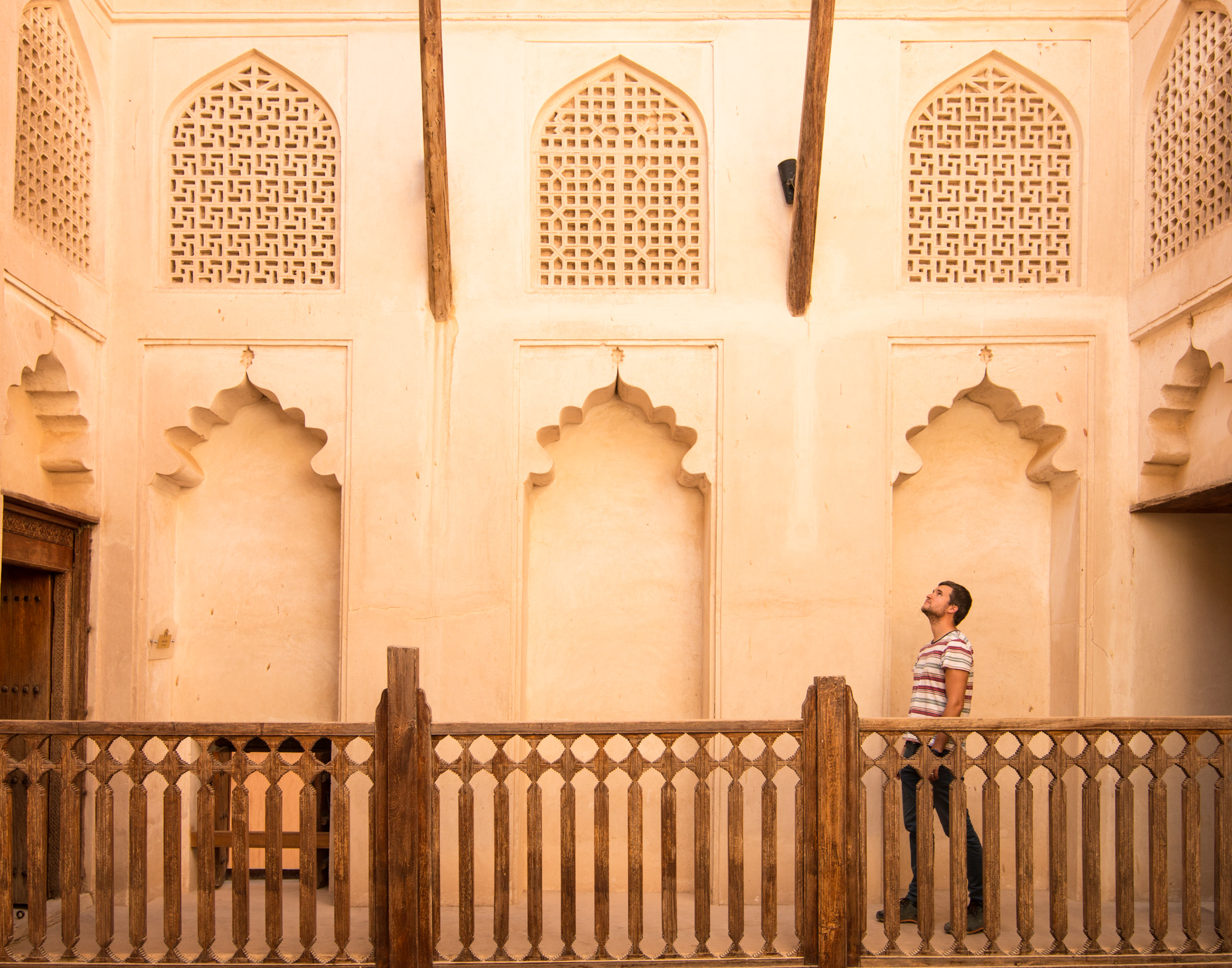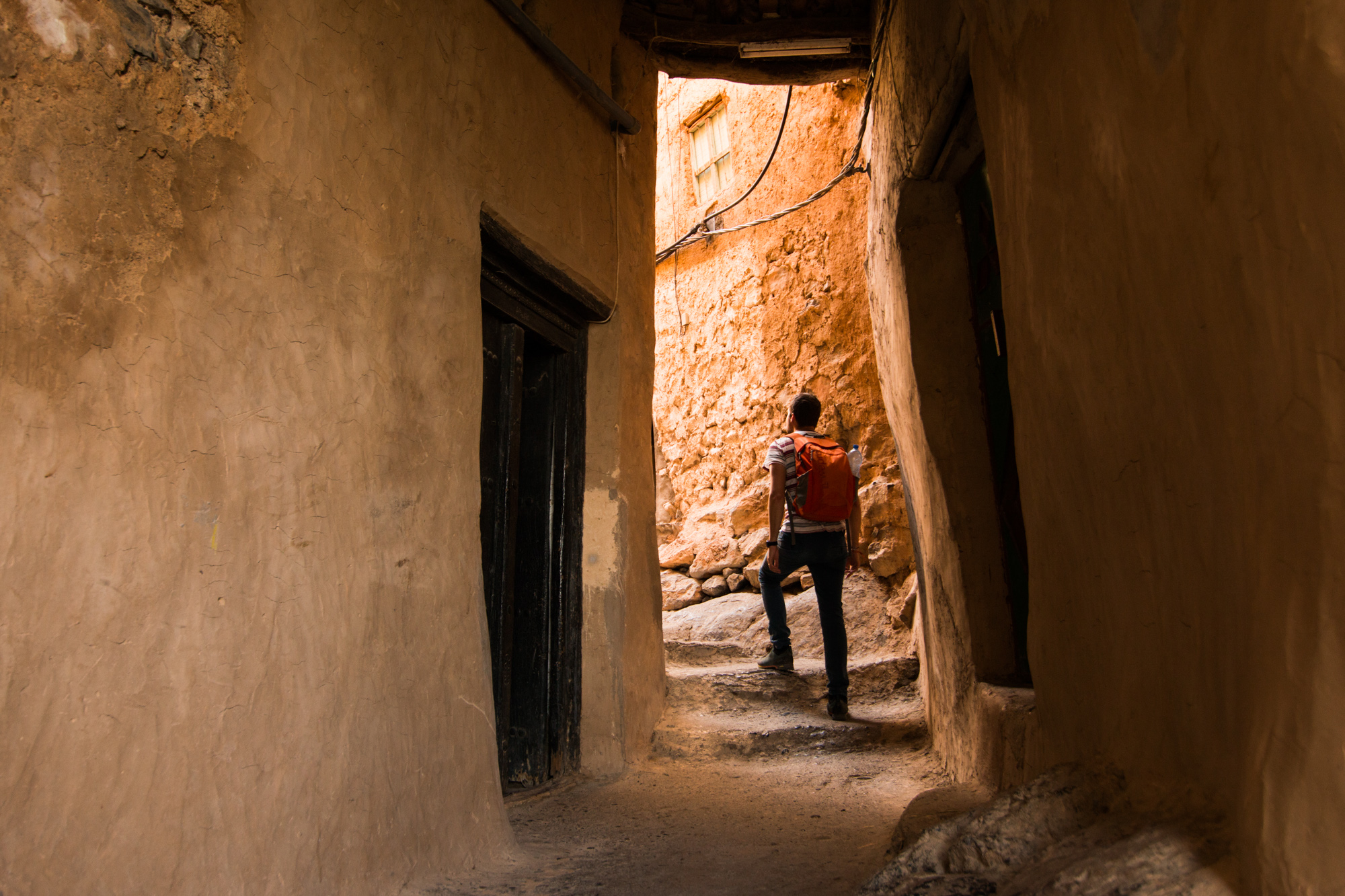I traveled to Barcelona many, many times. It’s one of my favorite European cities and I have a very good friend living there. Somehow all those times I never thought of visiting Montserrat. I knew it was a monastery in the mountains and to be honest I was never a big fan of catholic sites like that. But this year JD and I decided to give it a try. After all if it’s bad it’s only one day wasted.
I love to be wrong like that. It’s literally the best day trip from Barcelona.
What is so special about it?
On paper it doesn’t sound too great. Monastery in the mountains. It’s not as boring as that. The mountain range looks as if there were huge stone giants walking around the region, got tired and decided to lay down and stay. On those people they built a monastery but that’s not even the most spectacular part of the site. There is a little church built in a rock, crazy serpentine of roads in between the peaks and incredible views from numerous places. But let’s go step by step through…
…what is there to see?
Benedictine Monastery
That is by far the biggest and most famous attraction in there. Attraction is an adequate word to describe this site as there is even a bar that sells beer just next to the monastery. Quite shocking honestly. The Santa Maria de Montserrat abbey was founded in 10th century and is still fully functioning with around 70 monks living in residence. It doesn’t look much different from a usual church unless you look from afar. The sight of the monastery surrounded by almighty peaks is just jaw dropping.
Viewing terrace
Very close by the religious sight there is a whole serpentine of roads going back and forth and presenting incredible views on the mountains below as well as Santa Cova Chapel that looks imprisoned in between the rocks. We wandered around quite a bit and managed to find a balcony with two seats and the best views on the valley. We indicated where it was on our map below. Maybe because of the stairs that led to it and the fear of going back people didn’t dare to go there. Their loss was our win, we enjoyed these views with just the two of us.
The Instagram staircase
Just as we were walking around Montserrat we realized that it’s where the famous Staircase to Heaven was. We saw it on soooo many Instagram photos. Although on each and every one of those people climb on the very last of the nine stacked concrete blocks, it’s forbidden. Nowadays there is even a fence to prevent that. It was meant to be a piece of art not an Instagram installation. To be frank I would die of fear if I had to climb it… One false move, could be the last one. Also the view surrounding the staircase is not that spectacular compared to many others in the surrounding.
Santa Cova Chapel
It’s a hillside cave where the Virgin of Montserrat was hidden before being found by shepherds in the IX century. Centuries later a tiny chapel was built here. Although it’s possible to get to it by a funicular, it’s actually a short, not very challenging walk. A return trip would be about 1.5 hour all together. I think it’s the best way to visit it especially since funicular is not really cheap and it doesn’t take you all the way to the chapel anyway.
The church is really tiny but the views and the path leading to it are mind-blowing.
San Miguel’s Cross
From the monastery it might seem that you can visit the Santa Cova Chapel and then continue walking to the Sant Miquel’s Cross. Unfortunately there is no path behind the chapel so those are two separate walks. But going to the cross is a very short, 20 minute stroll that is not really challenging and the views are well worth it. We could admire the monastery from a distance and the gorgeous mountains below. Compared to views that we saw from Santa Cova (which we liked better anyway) these ones were more open simply because it’s a much higher point. I guess we prefer to feel “in the mountain” rather than on top of it but you might like this one better 🙂
Sant Jeroni Mountain
To reach the highest mountain in the area (1236m) we took the funicular that goes to the highest station and from there we followed a very clear path that led us through some forest patches and some beautiful view points over the mountains to the top. As much as we loved the views we recommend this hike to very motivated people. It’s not very strenuous and the path is easy, well maintained and clear but… we did it as the last thing on Montserrat and the sun was just excruciating. What’s more it’s a 3 hour return trip that does indeed provide beautiful views but not much different than the ones from previous places.
How to get to Monserrat and how to get around?
There are so many ways to get to Montserrat that it’s almost too confusing. So which one is the best and which one did we take?
By train and rack railway
That’s the option we chose because we wanted to be on the site as early as possible and the rack railway was beginning earlier in the morning than the cable car. Besides it was a bit cheaper than the option with the cable car (we paid 20.10 euro p.p). It takes about 90 minutes in total from Plaza de Espana to the top, so a bit longer than if we took the option with the cable car.
So with that option you take a R5 train from Plaza Espana to Manresa. You get off at Monistrol de Montserrat right next to that platform is where you have to take the next train. You can’t miss it. The whole route is really beautiful and it gets more and more impressive the higher you get.
Prices, timetables and combined ticket options here.
By train and cable car
It’s pretty much the same option but instead of the rack train you take a cable car from Montserrat Aeri. The cable car takes you up there in 5 minutes. If you’re going off season it’s worth checking if you can actually go with that option since during winter it’s only open on weekends and public holidays.
This mean of transport is best for those who want to get there fast and have the most spectacular views on their way. Additionally it’s few euros more expensive…
To check the cable car timetables and if it's even running go here.
By bus
I heard that there was also a bus going to Montserrat but it’s not frequent and so I didn’t take it under my consideration when we were going.
By car
If you’re into photography and you want to get there for the sunrise or stay till sunset or have the place all for yourself, car is the best option. There is plenty of parking spots up there. Unfortunately I have no idea how much it would cost to park there.
Getting around there
We did most of our sightseeing on foot except taking the San Joan funicular (8.10 euro one way) to shorten our journey to the Sant Jeroni peak. There is also another funicular shortening the trip to Santa Cova Chapel which we considered too expensive for too little (3.25 euro for one way). There is also an option of combining those two tickets for 16 euro both return. More info here.

